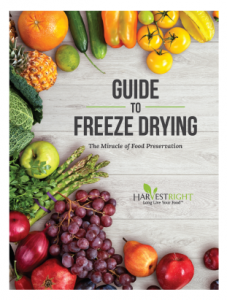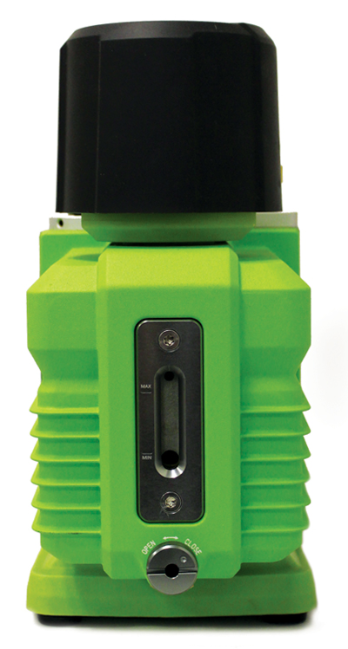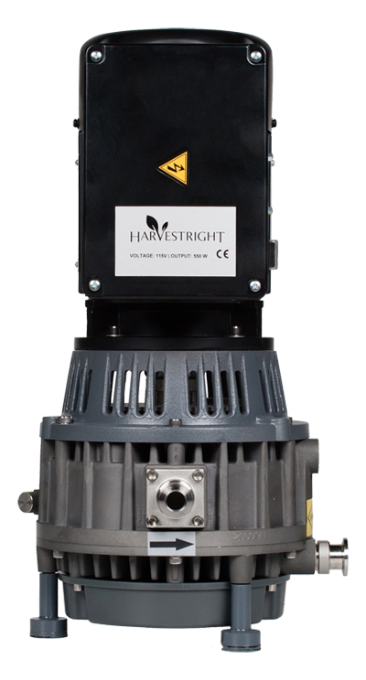There’s nothing like a good steak, right? When you have a home freeze dryer you can enjoy this indulgence more often because you can take advantage of sales and bulk opportunities. Freeze drying steak is easy, and it allows you to use steak in recipes as a replacement for less flavorful meats.

To freeze dry raw steak, just dice into large pieces, remembering to remove as much fat as possible. Then place the pieces of steak on trays and freeze dry. When the freeze drying process is complete, break one of the largest pieces in half and make sure there are no ice crystals in the middle of the steak. If there are, make sure to add more dry time until you can be sure there is no ice left in the largest piece(s).
Store the steak in airtight containers or Mylar bags with an oxygen absorber. Make sure to label the contents of the container as raw and record the date they were freeze dried. Most meat should be good for 10 to 15 years if it is properly freeze dried and stored in at least a 7 mil mylar bag. When you are ready to rehydrate your steak, place raw meat in a bowl of cold water and place in the fridge overnight, or until rehydrated. Meat will only accept the amount of water it needs; so no need to worry about over-hydrating it. You can remove any excess water with a paper towel and then cook the steak as usual. If you do not plan to rehydrate all of your steak, make sure to reseal your bag/container with a fresh oxygen absorber or store the meat in the fridge. Meat should never be left out in an open bag or jar once it has been opened.
Steak makes an excellent addition to stews and chili, and is delicious as a replacement for hamburger in tacos. You can also use these smaller pieces of steak in steak sandwich sliders.






Does anyone have experience with freeze drying spaghetti squash and / or pumpkin chunks that have had the outer shell peeled off? Should then end product still be “rubbery” or should it be dry in texture? Do you need to add additional time in the freeze drying process?
We haven’t tried that specifically, but we’ve seen people try it on some of the customer Facebook Groups. You might be interested in joining one of them. But, no, the chunks should not be rubbery but very dry and we’ve heard spaghetti squash comes back perfectly.
Can you freeze dry already frozen hamburger that is in 1 lb blocks and how would you do it. Would it be better to cook it first then freeze dry it? Can you add spices to it when you cook if before freeze drying it?
sorry have tried meat several times and it still has the lavor but comes out tough. not near as good. I was hoping for better results for this is one of the main reasons I bought one.
We find that freeze drying smaller pieces or tenderizing before freeze drying provides an amazing product. Meat is something that typically reconstitutes very well.
trying to freeze dry Eye of the Round, then grind to make pemmican…how might I tenderize first? If trying to preserve nutrients, could I just sear the outside of the rounds? dip in vinegar? then FD it, and use it in pemmican?
Sam-
I sous vide chicken breasts and round steak (London broil) prior to freeze drying. I use a vacuum sealer and leave a little extra space for the au jus (broth). I drain the au jus, cook it down, freeze it in silicon cupcake molds before freeze drying. I use the chicken au jus to re-hydrate the chicken, the beef for the beef. It is so delicious. I am a prepper that loves to eat well. Sous vide the beef for 12 hours at 131 degrees. Follow chicken recipe to your personal taste. I have both a Joule and an Anova.
Ps. I do not freeze dry uncooked meat.
Can you freeze dry rhubarb?. Should it be peeled? Cut in chunks? Run through food processor? Cooked before freeze drying and how long a cycle?. Default or custom?
Most customers cut in chunks, no blanch. Some sprinkle a little sugar on it and say that it is an amazing snack. Default settings are perfect.
I have freeze dried many meats that has turned out wonderfully. Turkey slices, shredded barbecued chicken(one of our favorites…even our picky eater kids love this), ham slices, hamburger gravel , bacon, pork chops, and on and on. We have had great success and love it all and the convenience.
When you put freeze dried product in a fruit jar and vacuum seal it is it necessary to put a packet of oxygen absorber in the jar?
We put an oxygen absorber in always, just to be safe, but if it’s properly sealed with no oxygen inside, then that also works.
I would say it depends on how long you intend on keeping it. Vacuum sealing in a jar will keep new air from getting in. While it gets most of the air out, it does not get it all, and a portion of that air is oxygen. So if you want it to last the longest, it would be best to put in an oxygen absorber. That would use up the last bit of oxygen in the jar. If you are going to eat it within a few months or so, there is probably no need.
How much dry time can you program to freeze dry cooked meat? Try to save energy and be more eco. Thanks
The most energy efficient way to freeze dry is by using the default settings.
I am wanting to buy mylar bags ahead of when I get my freeze dryer. I see all kinds of bags for sale. What is the best to use. And what kind of oxygen absorbers are best to use?
You can purchase both of those on our site, here: https://dev.harvestright.com/product-category/freeze-dryer-accessories/
Our Mylar bags are food-grade and rated for longterm storage. The 7 mil thickness and Mylar material aid in preventing oxygen and water from penetrating the bag.
Our 900CC oxygen absorbers effectively preserve packaged foods without the need for food additives/preservatives (and without the need for vacuum sealing).
Some of the beef I freeze dried has a little fat in it, difficult to remove. Will this effect the shelf life? Thanks in advance!